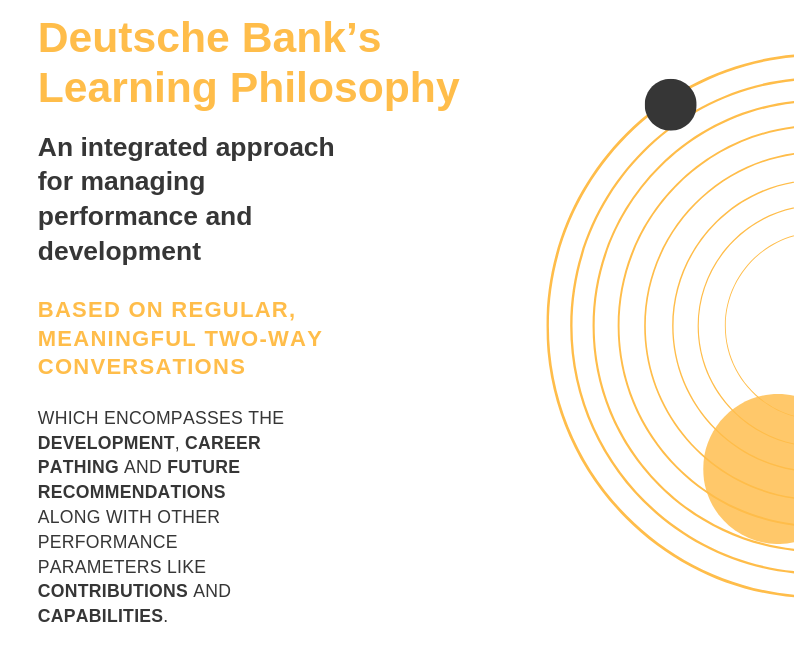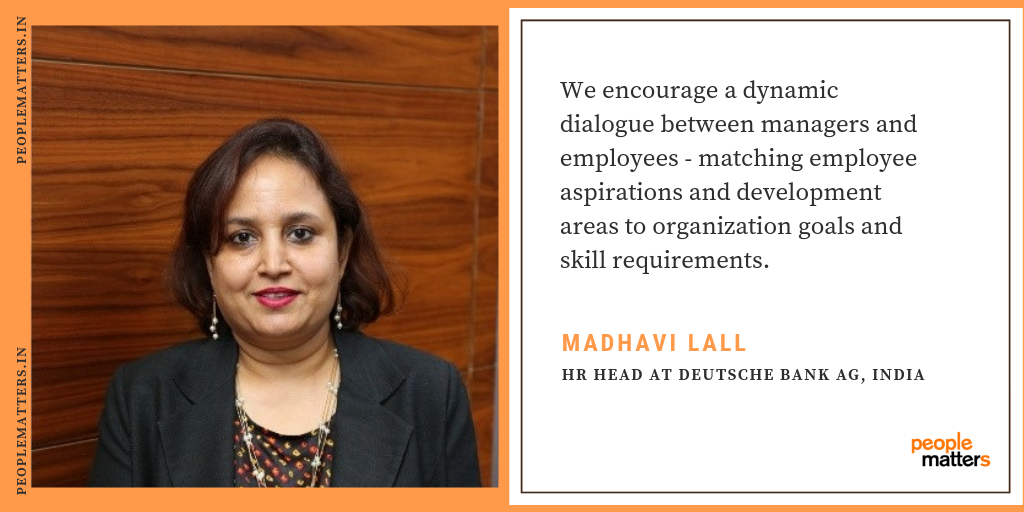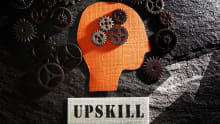How Deutsche Bank is building a culture of continuous learning

86 percent of respondents who participated in Deloitte’s 2019 Global Human Capital Trends survey said that they must reinvent their ability to learn. Further, research shows that the top reason people quit their jobs is because of the ‘inability to learn and grow’.
Industries are undergoing rapid technology-based disruption. And with the convergence of technologies, there are continuous changes in the business ecosystem, making competencies in the workforce go obsolete. ‘Lifelong Learning’ is the only feasible option. Organizations are increasingly identifying the importance of continuous learning.
If we look at the relevance of continuous learning in the context of Banking, digitization, automation, and artificial intelligence are changing business priorities and shifting the demand for skills.
“Banks could face their own Kodak moment by falling into irrelevance if they fail to keep pace with rapidly developing fintech technologies and increasing demand for superior customer experience. Therefore, scalable learning is the need of the hour- it is no longer a good-to-do but imperative for survival,” said Madhavi Lall, HR Head at Deutsche Bank AG, India.
With the leadership support at Deutsche Bank, continuous learning has been embedded in the organization culture. Madhavi shares different ways in which Deutsche Bank is upskilling their talent and discusses the challenges, impact metrics and the essential ingredients needed to design and drive continuous learning.
Embedding continuous learning in Deutsche Bank’s culture
The company’s performance management philosophy gives significant emphasis on development and career conversations. The bank follows 70:20:10 model, with a belief that mixing, different learning methods leads to effective learning. 70 percent of the learning is given through the job experience, 20 percent of the learning is through relationships, network and feedback and 10 percent of the learning is delivered through formal training interventions.
The bank also has a digital curriculum in place to make sure that fast, effective learning is available for everyone, everywhere and at any time. Learners are offered handpicked learning resources in a range of formats including virtual classrooms, podcasts, videos, and articles - many of which take less than five minutes to complete and are easily accessible.

Madhavi shared, “We follow an integrated approach for managing performance and development, based on regular, meaningful two-way conversations, which encompasses the development, career pathing and future recommendations along with other performance parameters like contributions and capabilities. We encourage a dynamic dialogue between managers and employees-matching employee aspirations and development areas to organization goals and skill requirements.”
While driving people to have learning conversation and other initiatives are working for Deutsche, the challenge often lies in measuring the impact of such learning programs.
Measuring the impact
Deutsche looks at training at multiple levels and stages of an employee lifecycle – new joiner training, personal development training, leadership development programs, high potential programs, etc. The impact of each is measured using different parameters. There could be pre and post assessment, in some cases 30 days/60-day feedback and so on.
“One of the critical measures of success is the feedback that comes from the business - how the learning interventions have impacted the day to day work,” said Madhavi.

The new learning paradigm - Personalizing the learning experience
The rise of new employment models, the presence of multiple generations at the workplace, varied learning styles are all influencing the way learning is done. The learning function itself is undergoing a transformation.
Madhavi believes that in this changing learning scenario, ‘the key challenge will be empowering employees to reskill and reinvent themselves to support flexible career journeys through being highly valued business partners.’
What does this imply?
This would mean a convergence of the right technology and a fit-for-purpose culture. The learning function needs to place the ‘customer’(employee) at the center creating easy, digital experiences that people expect in their daily lives from ordering food, to paying bills to social media platforms.
Madhavi added, “Employees can access a varied set of learning tools at their fingertips these days, so the problem we need to solve for is how do we provide individualized, relevant and engaging content in real time?”
Additionally, the focus needs to be on building a culture which acts as a catalyst for next-generation careers.
“Organizations which get this right would have successfully woven learning in the fabric of the future workplace,” said Madhavi.
Keeping in mind the fast pace of disruption impacting not only skills but learning itself, even the learning interventions need to be reviewed from time to time.
There is a constant need to identify and measure skills, match them to the right jobs and provide adequate support to unleash potential. This is only possible if the learning strategy continues to be dynamic and social.
(The article is based on an interaction with Madhavi Lall, HR Head at Deutsche Bank AG, India on continuous learning.)
Image credit: Financial TImes






